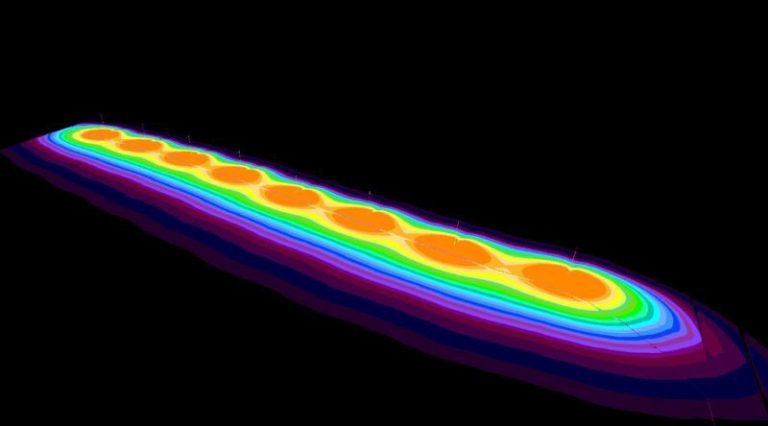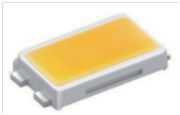Table of Contents
Maximizing Efficiency: How Smart Integrated Solar-Powered Street Luminaires Are Revolutionizing Urban Lighting
In the ever-evolving landscape of urban development, the quest for sustainable and efficient solutions has become paramount. Among the myriad innovations emerging to address this need, smart integrated solar-powered street luminaires stand out as a beacon of progress. These innovative lighting solutions combine the power of solar energy with intelligent technology to provide illumination while minimizing environmental impact and maximizing efficiency.
At the heart of smart integrated solar-powered street luminaires lies photovoltaic technology, which harnesses the sun’s energy and converts it into electricity. This renewable energy source offers a clean and sustainable alternative to traditional grid-powered lighting systems, reducing reliance on fossil fuels and lowering carbon emissions. By utilizing solar power, these luminaires operate independently of the electrical grid, making them ideal for remote or off-grid locations where access to electricity may be limited or unreliable.
What sets smart integrated solar-powered street luminaires apart is their integration of advanced technology to optimize performance and functionality. Equipped with sensors, controllers, and communication modules, these luminaires are capable of adapting to changing environmental conditions in real-time. For instance, built-in motion sensors can detect movement and adjust the brightness of the lights accordingly, conserving energy when illumination is not needed. Similarly, ambient light sensors can automatically dim or brighten the luminaires based on natural light levels, further enhancing energy efficiency.
Moreover, smart integrated solar-powered street luminaires are equipped with connectivity features that enable remote monitoring and control. Through wireless communication networks, such as cellular or Wi-Fi, operators can remotely access and manage individual luminaires or entire lighting networks from a central location. This capability not only facilitates proactive maintenance and troubleshooting but also allows for dynamic adjustment of lighting schedules and configurations to meet specific requirements or optimize energy savings.
The benefits of smart integrated solar-powered street luminaires extend beyond energy efficiency to encompass improved safety, reliability, and aesthetics. By providing consistent and uniform illumination, these luminaires enhance visibility and security in urban areas, reducing the risk of accidents and criminal activity. Furthermore, their low maintenance requirements and long lifespan contribute to greater reliability and cost-effectiveness over time. Additionally, the sleek and modern design of these luminaires adds to the overall aesthetic appeal of urban landscapes, enhancing the quality of life for residents and visitors alike.
| Number | Article Name |
| 1 | Solar Garden Light |

As cities worldwide seek to reduce their carbon footprint and transition to more sustainable energy sources, smart integrated solar-powered street luminaires offer a compelling solution for urban lighting needs. By harnessing the power of the sun and leveraging intelligent technology, these luminaires represent a paradigm shift in how we illuminate our streets and public spaces. Their ability to maximize efficiency while minimizing environmental impact makes them a cornerstone of sustainable urban development initiatives.
In conclusion, smart integrated solar-powered street luminaires are revolutionizing urban lighting by combining renewable energy with intelligent technology to deliver efficient, reliable, and aesthetically pleasing illumination. With their advanced features and connectivity capabilities, these luminaires are poised to play a key role in shaping the cities of the future, where sustainability and efficiency are paramount. As we continue to strive for a brighter and more sustainable future, smart integrated solar-powered street luminaires illuminate the path forward towards greener and smarter urban environments.
Sustainable Solutions: The Future of Smart Solar Street Lighting Systems
In the quest for sustainable solutions to urban challenges, the integration of technology and renewable energy sources has become paramount. One such solution gaining momentum is the implementation of smart integrated solar-powered street luminaires. These innovative systems represent a significant advancement in urban lighting infrastructure, offering a multitude of benefits in terms of energy efficiency, cost-effectiveness, and environmental sustainability.
Smart integrated solar-powered street luminaires combine the latest advancements in solar energy technology with intelligent lighting systems. Unlike traditional streetlights that rely on grid electricity, these luminaires harness the power of the sun to generate electricity through photovoltaic panels. This renewable energy source not only reduces dependency on fossil fuels but also mitigates greenhouse gas emissions, contributing to efforts to combat climate change.
One of the key features of smart integrated solar-powered street luminaires is their ability to operate autonomously. Equipped with sensors and smart controllers, these luminaires can adjust their brightness levels based on ambient light conditions, optimizing energy usage throughout the day. Additionally, they can detect motion and adjust lighting levels accordingly, enhancing safety and security in urban environments while minimizing light pollution.
The integration of connectivity features further enhances the functionality of these systems. Through wireless communication protocols, such as Wi-Fi or cellular networks, smart integrated solar-powered street luminaires can be remotely monitored and controlled in real-time. This enables proactive maintenance and troubleshooting, ensuring optimal performance and reliability.
Another notable aspect of these luminaires is their modular design, which allows for easy installation and scalability. Whether deployed in a small residential neighborhood or a bustling city center, these systems can be tailored to meet specific lighting requirements and infrastructure constraints. Furthermore, modular components facilitate future upgrades and expansions, ensuring longevity and adaptability in a rapidly evolving urban landscape.
In addition to their technical capabilities, smart integrated solar-powered street luminaires offer compelling economic benefits. By reducing reliance on grid electricity and minimizing maintenance costs associated with traditional lighting systems, these luminaires offer significant long-term savings for municipalities and local governments. Moreover, the potential for revenue generation through surplus energy production and carbon offset programs further enhances their economic viability.
The environmental impact of smart integrated solar-powered street luminaires cannot be overstated. By harnessing clean, renewable energy, these systems help reduce carbon emissions and alleviate the strain on finite natural resources. Furthermore, their efficient operation and intelligent controls contribute to overall energy conservation, supporting broader sustainability objectives in urban planning and development.
In conclusion, smart integrated solar-powered street luminaires represent a paradigm shift in urban lighting infrastructure. By leveraging the power of solar energy and incorporating advanced technologies, these systems offer a sustainable and cost-effective solution for illuminating public spaces. With their autonomy, connectivity, and modular design, they are poised to play a pivotal role in shaping the future of smart cities worldwide. As cities continue to grapple with the challenges of urbanization and climate change, investing in smart solar street lighting systems is not just a prudent choice but a visionary one that paves the way towards a brighter, more sustainable future.







